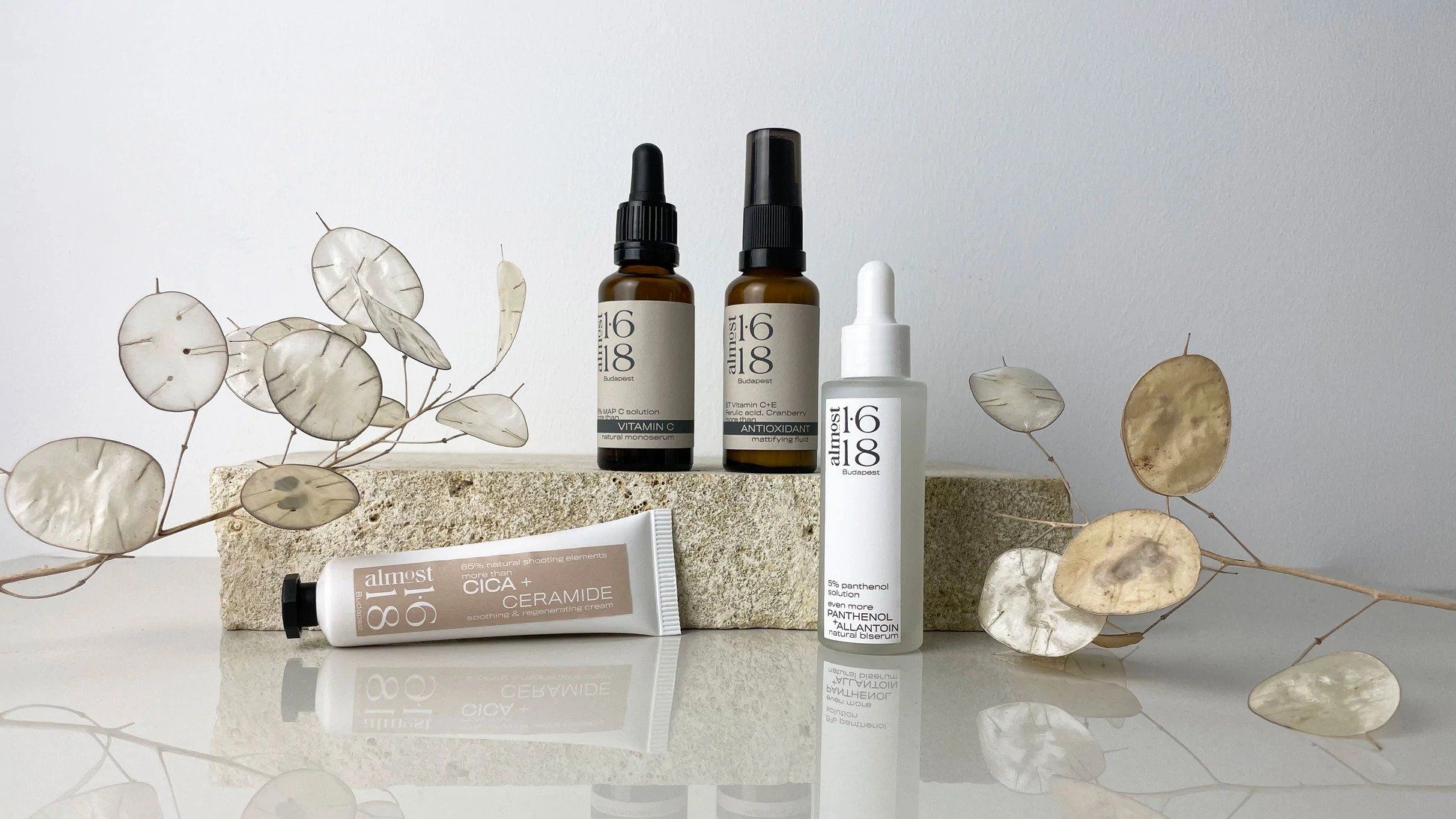In 2016, the arrival of a Canadian brand, The Ordinary, radically transformed the beauty industry and consumer behavior. Affordable, low-ingredient products came in sleek, pipette-style bottles, and social media has since been flooded with shoppers and influencers who have become amateur chemists, starting and ending their day with multi-step skincare routines. Good news for those looking for such active ingredient-focused products: alternatives are now developed and manufactured in Hungary. Since PHI Cosmetics’ little sister, Almost 1.618, a brand run by women in their twenties, was launched in March 2021. We asked Tímea Nagy, a team member of PHI and Almost 1.618.
What brought the Almost 1.618 brand to life?
In its seventh year, PHI is aimed more at the 35+ age group. Like in fashion, there are different trends in cosmetics, such as the active ingredient focus, which is most popular among young people. We have been thinking about launching a small product range, even within PHI, for some time now. However, as we started to take the active ingredients apart, we saw that this would mean so many products that it would be reasonable to move them to a different brand. If only because it requires a completely different communication and targets a different group.

What exactly does it mean for a brand to be active ingredient-focused?
While PHI has more natural active ingredients in one product and the formulas are much more complex, with Almost, we base the product on one active ingredient, and we build that active ingredient into technical substances that allow it to reach the deeper layers of the skin. So the point is: biserums typically have two active ingredients, and monoserums have only one.
Why do you think the active-ingredient focus has become popular among young people?
On the one hand, it’s a trend, and the first pioneer who created a demand for this type of product was The Ordinary brand. I also think young people read a lot more about active ingredients and have many skin problems (and I don’t just mean acne). It seems that it is more convenient for them to build up their own routine from a single active ingredient than to use a complex formula that may contain an active ingredient that they consider unnecessary. It gives the user a free hand to build up their skincare routine with one active ingredient at a time.
Could the interest of young people in active ingredient-focused products also be linked to spending more time and being more conscious about their skin?
Conscious skincare doesn’t necessarily mean using only active ingredient-focused cosmetics, but knowing your skin and which ingredients and active ingredients are suitable for it. A complex formula can work just as well as an ingredient-focused one. Some people follow the two approaches almost like a religion, and there are fierce debates between one view and the other about active ingredients and brands. Likewise, we hear arguments for and against sunscreen, parabens and essential oils, and these are no longer debated by experts but by laypeople. It is difficult to decide. Our job is to put products on the table that work and that consumers love.
If I want to explore the world of active ingredient-focused products, how do I know where to start?
It’s always good to know your skin type and current skin condition. If you are suffering from a chronic skin problem, we recommend visiting a doctor or dermatologist for a diagnosis. Not a solution necessarily, because there are many different views—some people accept the solutions suggested by a dermatologist, but many reject them. But it is important to have a diagnosis from a doctor.
Our skin is one of our largest organs and a perfect mirror to show us if there is a problem inside. Skincare is closely linked to digestion, nutrition and hormonal balance. If we have a skin problem, it’s not necessarily because we have sensitive skin. It may be more about looking internally to see what our skin shows us. It could be a food allergy, it could be stress, it could be psychological. Once we know these, it is easier to find a solution that can improve the condition. In most cases, it turns out that it is not enough to take care of your skin from the outside; it is very important to be able to support it from the inside.
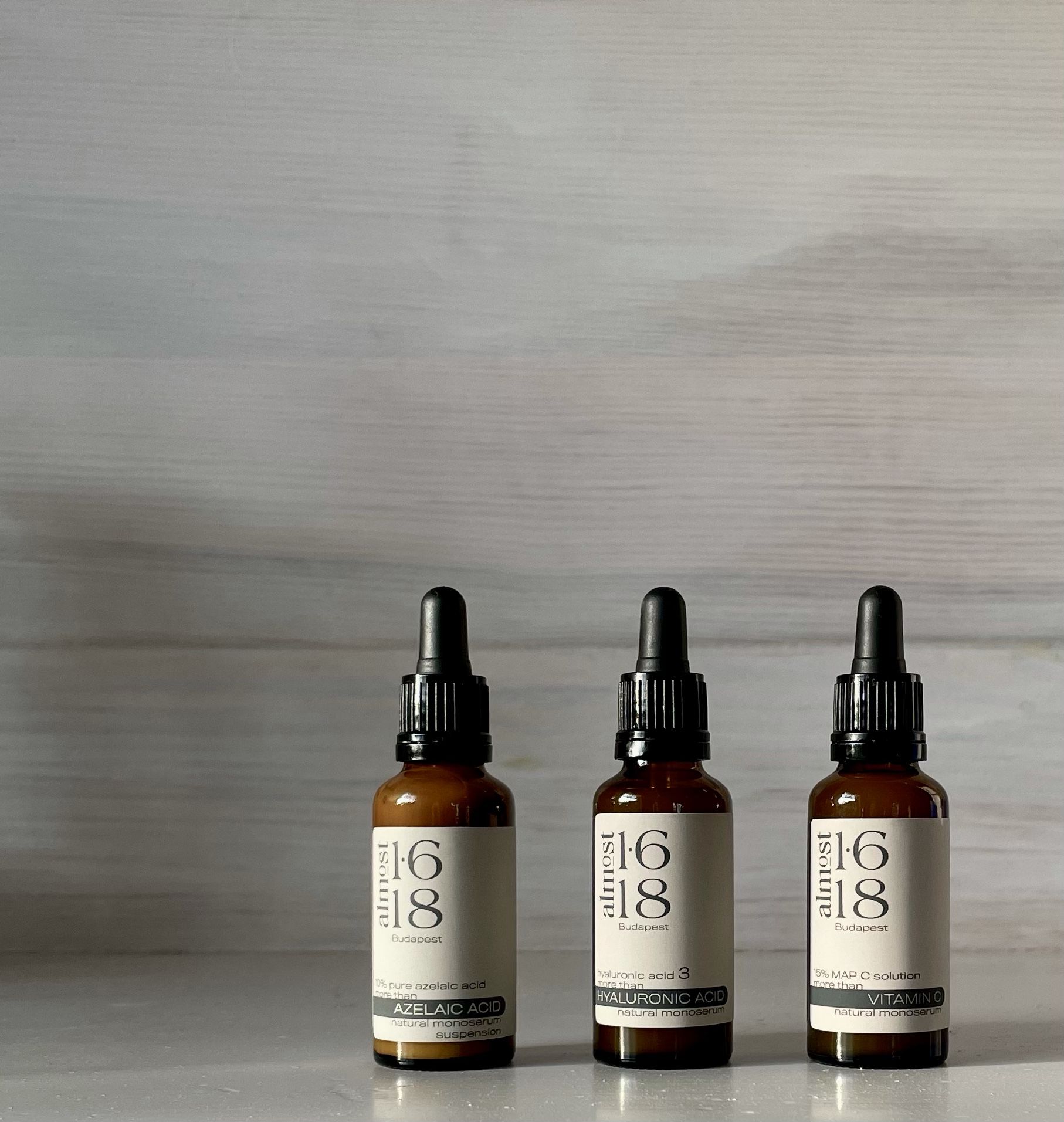
The website says that the products are made with green, environmentally friendly and modern technologies. What did you pay attention to during the product development?
At Almost, we try to minimize the use of plastic. 85-90% of our packaging is glass. The active ingredient trend does not require the product to be natural, but we have opted for it. For us, this means that the active ingredient itself comes from a natural environment and that the technical components are all extracted from nature. It is crucial for us that all products—including, for example, a detergent that enters the sewer when used—can be adapted to the green approach.
Some products take a month or two to develop, and on others, we have been working for a year. In these cases, we make several prototypes and start testing them in-house. Beyond whether the product itself remains stable, what’s important to us is how the skin feels afterward. Once, our hyaluronic acid serum reached an influencer in Romania through one of our distributors. She thought that this product was not good because it was not sticky. She assumed it was good if the product sticks because she was used to it from her previous experience. We believe a product has to be comfortable to wear. Especially in active ingredient-focused skincare, where the facial routine can consist of many steps, it’s essential that the different layers of the product feel comfortable to use.
In laboratory tests, there is a regulation on the limit of a given cosmetic. It serves as the basis for determining the expiry date, which is also linked to the packaging, the product and its use. For example, our serums, although they have a two-year shelf life, must be used within three months of opening because they deteriorate faster as they are exposed to air (a synthetic product does not have this problem because they use such strong and well-working preservatives that if you open the product, it will not contain any bacteria even after a year).
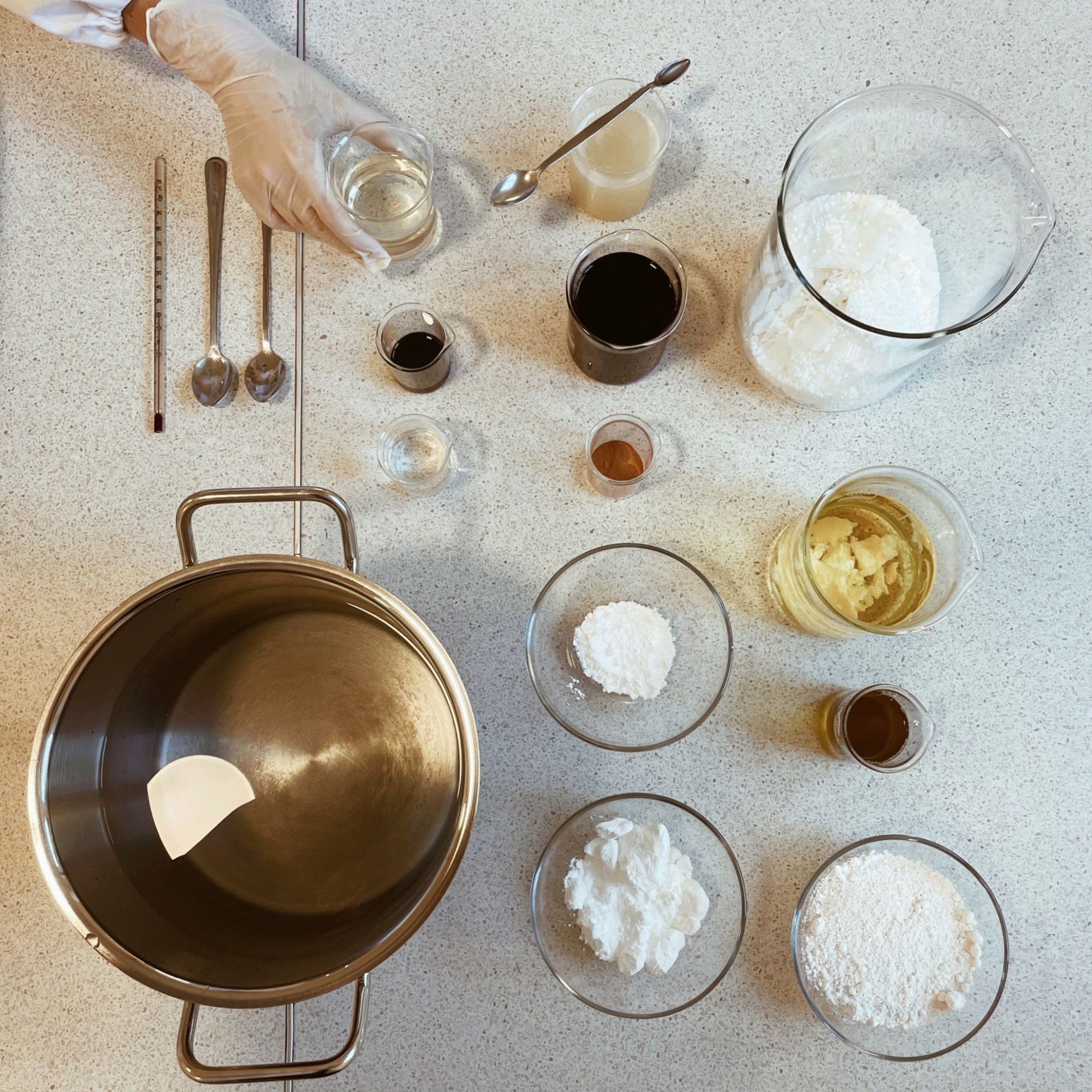
What design principles have guided you in developing the Almost identity?
I’ve worked on both brands’ identities and they both have a different direction. PHI has a colorful look because of the wide range of herbal ingredients. On the other hand, Almost’s identity is very clean, suggesting that the product itself works with simple textures and few active ingredients.
Based on the past year, how do you see your customer base?
Our products are typically bought by the younger generation, but there is a slight overlap, given that we launched the brand with the slogan “PHI introduces its younger sister.” In addition, Nóra Szujó, the product developer of Almost, is also involved in the development of PHI, and vice versa, Mariann Rácz (the product developer at PHI) is also working on the Almost products. We didn’t know how the customer base of PHI would react to the launch of the small brand since we were talking about a completely different price range. Almost costs about a third of the price of PHI, so we even assumed that some of PHI’s customers would switch to Almost, but we don’t see that happening, but instead that we were able to open up to a segment that we would never have reached with PHI products.
What are you currently working on?
At the end of last year, we introduced our facial care counseling service provided by Nóra Szujó at our center. This consists of skin diagnostics, product analysis and setting up a complete routine.
This month also sees the introduction of peelers to the palette in terms of products. We don’t have sunscreen yet, and that’s always been a cornerstone issue at PHI. We are now planning to have it available at Almost soon.
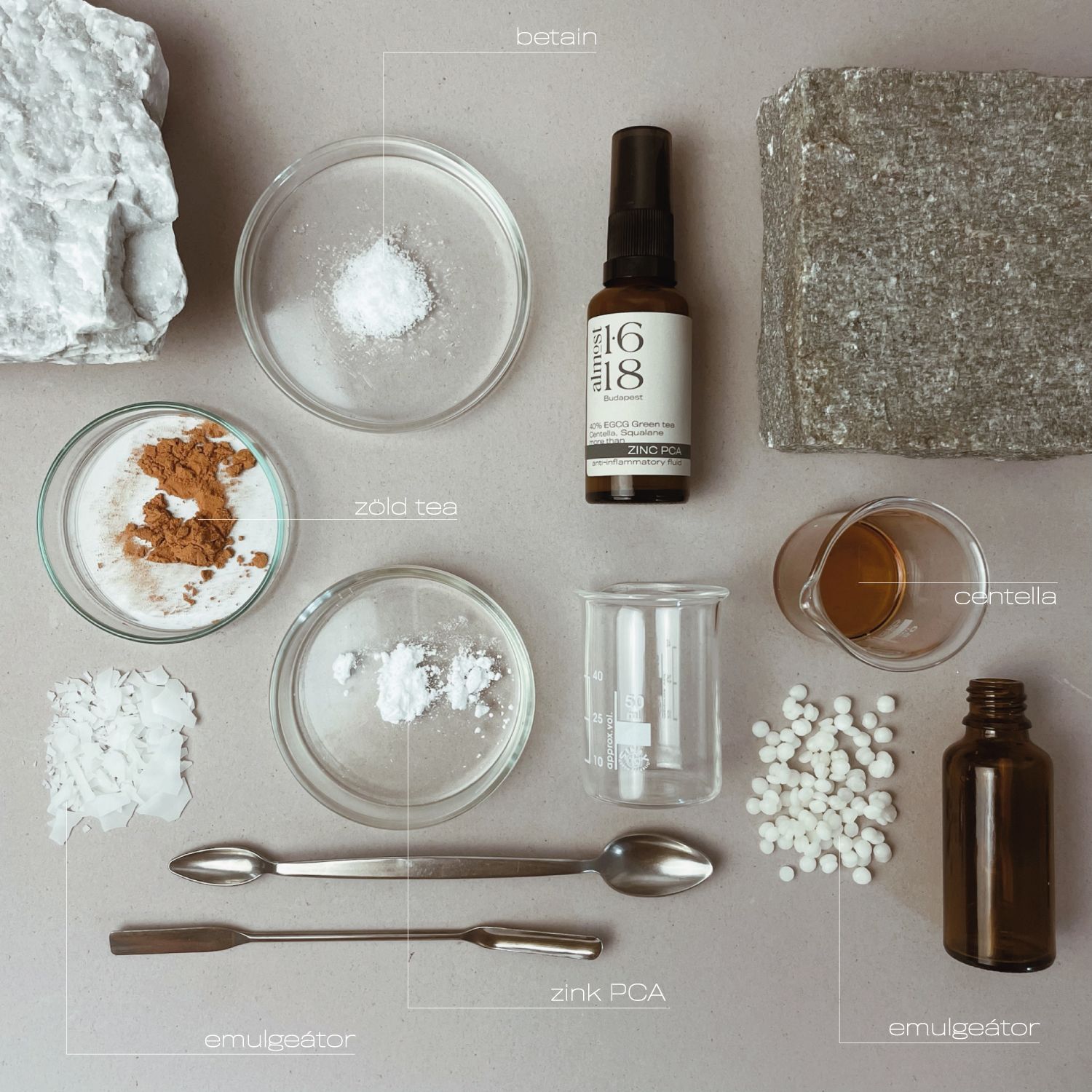

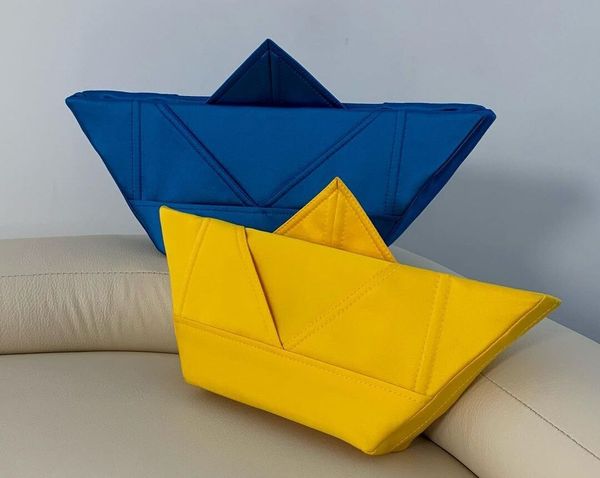
Ukrainian designers we won’t let out of sight III.
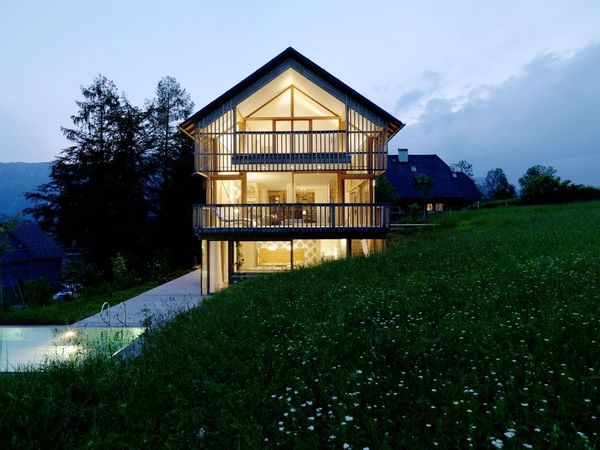
These stylish holiday homes will immediately get you in the mood for a hike! | TOP 5










